Star Wars: Jedi Challenges review — The Force is strong in AR
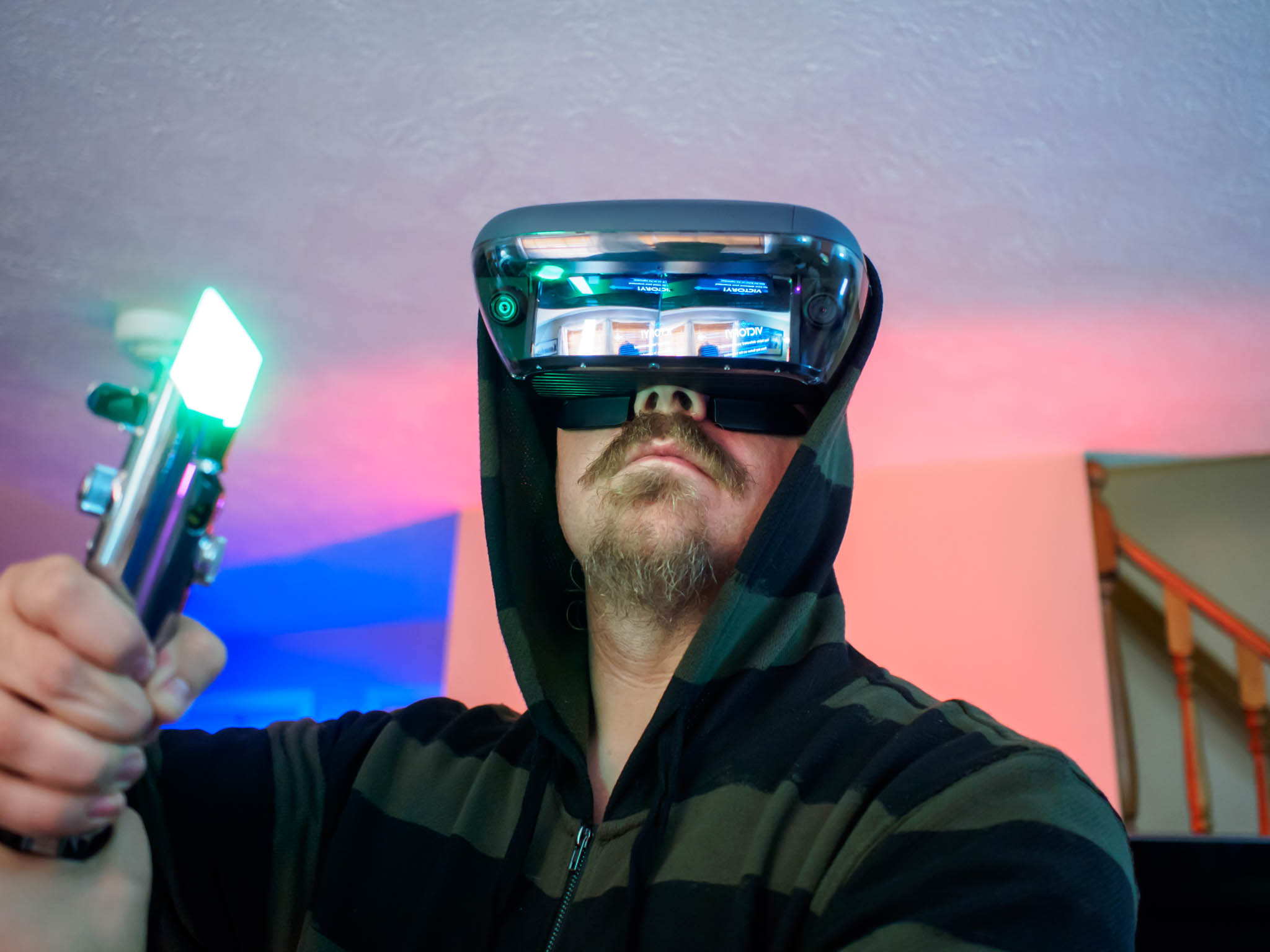
Every Star Wars fan, whether you support the Rebellion or the Empire, has picked up a lightsaber at some point and dreamed of fighting an equally skilled opponent for the future of the Galaxy. Everything from cheap plastic lightsabers that extend when you flick your wrist to meticulously detailed replicas have been around for as long as the movies have been around for this very reason, but never really capture the thrill of saber combat. Disney and Lenovo have partnered up to fix that, but instead of making the lightsaber itself smarter this new experience is using your phone and a pair of cameras to trick your brain.
It's called Star Wars: Jedi Challenges, and after a week with this experience, it is clear every fan is going to want one of these this year.

A more civilized weapon
Star Wars: Jedi Challenges Hardware
The first thing you see when you open the box is that lightsaber. Everyone knows this lightsaber. It's the lightsaber. Discarded by Anakin until it was handed to Luke. Discarded by Luke until it called out to Rey. The most iconic metal tube speckled with buttons and knobs in the history of science fiction, only this one has a small rubbery tip where everyone normally expects to see three feet of energy blade.
That blade exists, but only once you have put the headset on.
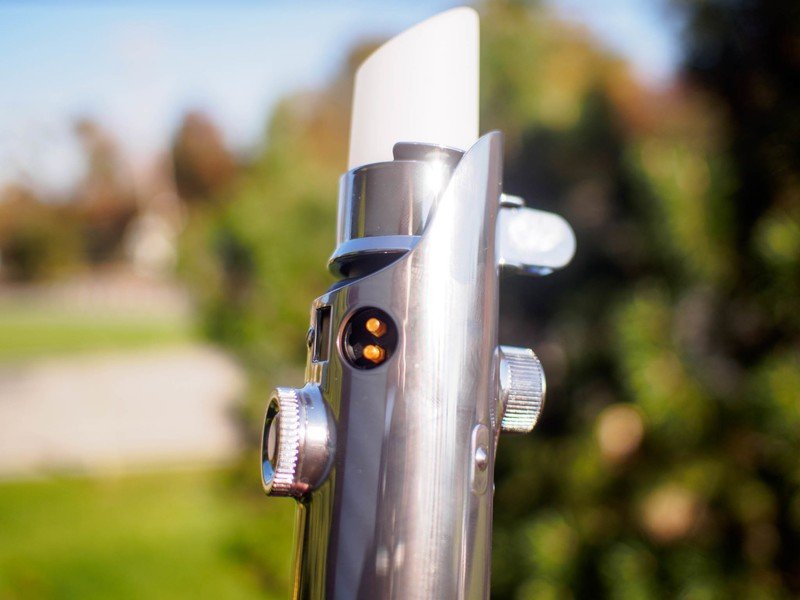
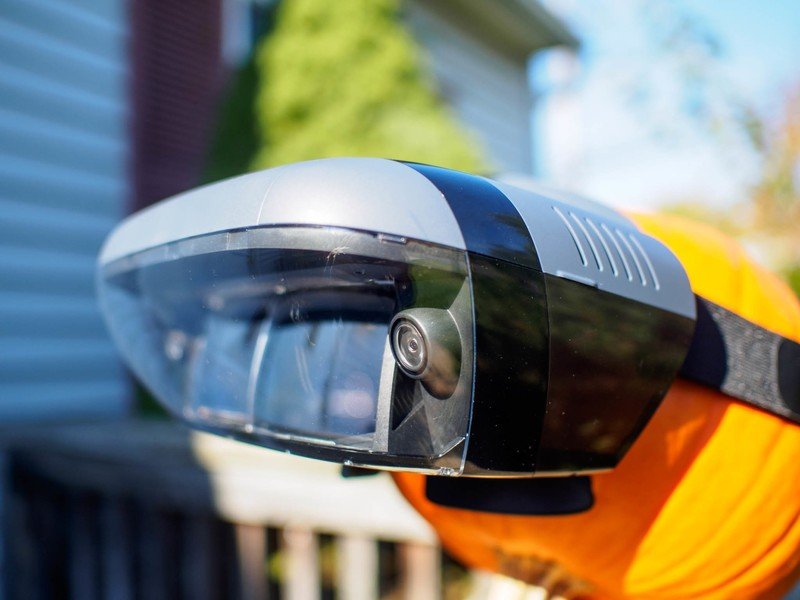

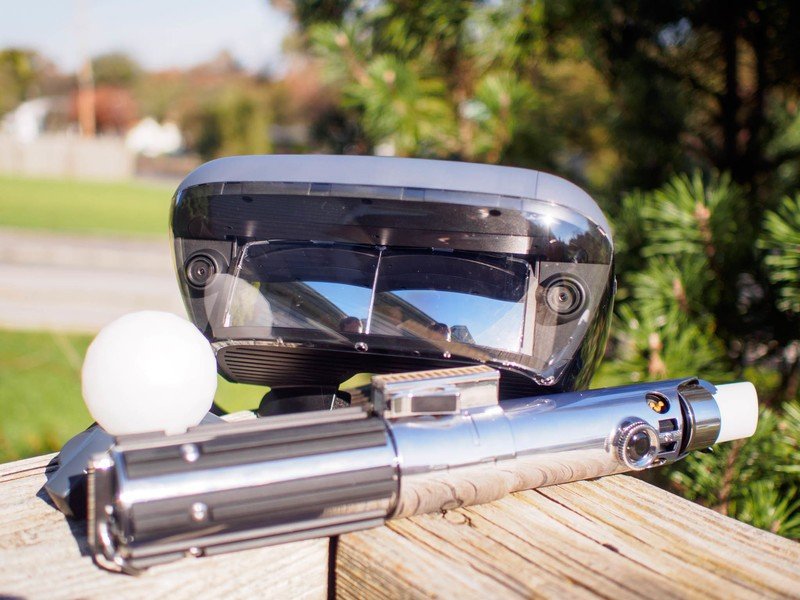

This is augmented reality that uses your phone, and that's as cool and weird as it sounds.
Unlike your standard Google Cardboard or Daydream VR headset, Lenovo's Mirage AR headset is largely transparent. No matter what you are doing in your Jedi training, the real world will always be visible through the tinted lenses on this headset. It still uses your phone as the brain and the display on your phone to show you the Jedi training environment, but instead of replacing the real world entirely you are interacting with a collection of interactive holograms.
Get the latest news from Android Central, your trusted companion in the world of Android
It does still require a phone to work though, and Disney has been less-than-clear about which phones are going to work with this headset. I've had demonstrations with a Moto Z2 Force and an iPhone 6, and according to Disney the app will support "most smartphones made in the last few years" when available in the Play Store. The official list you'll find on the Jedi Challenges website is the list of phones that have been tested and confirmed to work, but many more phones are expected to actually support this game.

Setting this headset up is a little more complicated than it maybe should be. Every time you want to play Star Wars: Jedi Challenges you have to:
- Launch the app on your phone
- Turn the lightsaber on
- Make sure the lightsaber is paired to your phone
- Confirm you are ready to play Jedi Challenges
- Insert your phone into the cartridge
- Connect the USB cable to your phone
- Connect the USB cable to your headset
- Put the headset on
If you do any of this out of order, there's a good chance you have to start over. If you need to use your phone to answer a call or anything while the phone is in the headset, you have to repeat this process to get back into your game. For technically-minded players this isn't so much complicated as it is tedious. For less technically-minded people, this quickly becomes complicated enough to cause frustration.
If you didn't believe in The Force before, you seriously consider starting.
Once everything is set up, you place the included beacon somewhere in your room and press a button on the lightsaber to let the game know you are ready to go. The game uses that beacon as a marker for where to put things like the menu. It helps the game figure out how much space you have to play in, and makes it possible for you to wander around and interact with the holograms.
One thing Lenovo's design handles beautifully is ensure the battery on your phone isn't toast after gameplay. In my tests with the Moto Z2 Force Lenovo provided for this review, an hour of gameplay would cost anywhere between 18% and 20% of the battery, which is considerably less than most VR counterparts. Some of this is because far less of the display is being used for this game, but in this case the why isn't nearly as important as the ability to keep swinging that lightsaber.
All of this tech serves a single purpose, to make you feel immersed in this world. That happens instantly the first time you are told to press the button on the side of your lightsaber to summon your blade. That iconic energy sound surrounds you, and through the headset you see the blade of your lightsaber extend from the real-world accessory you are holding in your hand. As you move the handle around in the real world, the blade moves to match. If you didn't believe in The Force before that moment, you seriously consider starting the first time you see the real world and the virtual world come together right in front of your eyes.
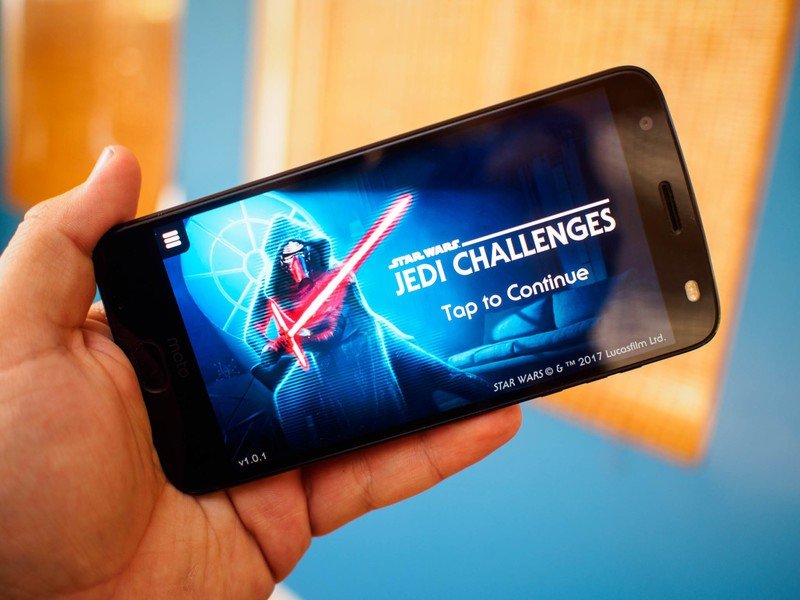
Meet The Archivist
Star Wars: Jedi Challenges Software
When you put the headset on and fire up your lightsaber, what you're actually doing is activating a Jedi training program. Since the Jedi Academy is no more, and Luke is busy hiding on a secluded planet most people can't even find, this is your last best hope at becoming a Jedi Master. Your teacher comes in the form of an AI construct called The Archivist, and she has a training program to guide you from a lowly initiate to a balanced and capable Force weilder.
Your training has three aspects. There's physical combat through lightsaber battles, mental focus through HoloChess, and strategic planning through battlefield simulations. Each training aspect has five sections with three difficulty levels. Completing a section means successfully finishing three stages, and for the lightsaber battles the third stage is a one-on-one fight with a red saber-wielding opponent. Throughout the game you will duel with:
- Darth Maul
- The Seventh Sister
- The Grand Inquisitor
- Darth Vader
- Kylo Ren
Saber combat against these Masters is a little different from the other fights, which are almost exclusively against Stormtroopers and Droids. In the lesser forms of combat, you spend most of your time perfecting the art of returning blaster fire. Occasionally one of these opponents will get close enough for you to strike them down with a satisfying swing, but most of the time you are eliminating multiple enemies at a go by making them eat their own blaster fire.
The main event, the duels themselves, are a lot more physical. Your opponent is going to get up in your face and swing a saber at you, and you have to either block or move out of the way of those attacks. To help with the blocking, the game gives you Force Prediction to highlight where to place your saber. Raise your blade to meet that highlighted area, and you will successfully block the attack. Block enough of those attacks, and Force Prediction will grant you an attack of opportunity window where you can strike you opponent to deal the most damage. You don't have to wait for these windows to strike, but you'll want to pay attention when they pop up to give yourself an advantage.
As you fight through these opponents, you will gain Force powers to help you along the way. Force Push will knock down weaker opponents or halt powerful attacks from stronger opponents, and is my personal favorite. You can also summon The Force for protective barriers or to enhance your speed in battle, but being able to wipe out a group of Stormtroopers is too much fun to give up.
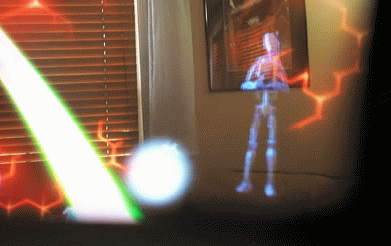
When you successfully fight your way through the first difficulty level, The Archivist rewards you with a change to your lightsaber. As a Padawan you are given a green saber just like Luke, and the real-world saber will change to match what you see in the game. A similar change happens when you finish the second trip through the game. If you are skilled enough to complete the third difficulty level, a sixth area will unlock and you will fight The Archivist herself. She pulls techniques from every opponent you fight in the game, and is the final indicator of your skill as a Jedi.
As entertaining as the story for this game and its characters are, halfway through the second difficulty tier I started running into the limitations of this hardware. The lightsaber blade would occasionally lag behind my movements in big obvious ways, which quickly pulls you out of the illusion and quickly reminds you this isn't quite magic. It's a rare occurrence in the rest of the game, but happens just enough to frustrate me into removing the headset for a while and taking a break.
HoloChess and Strategic Combat
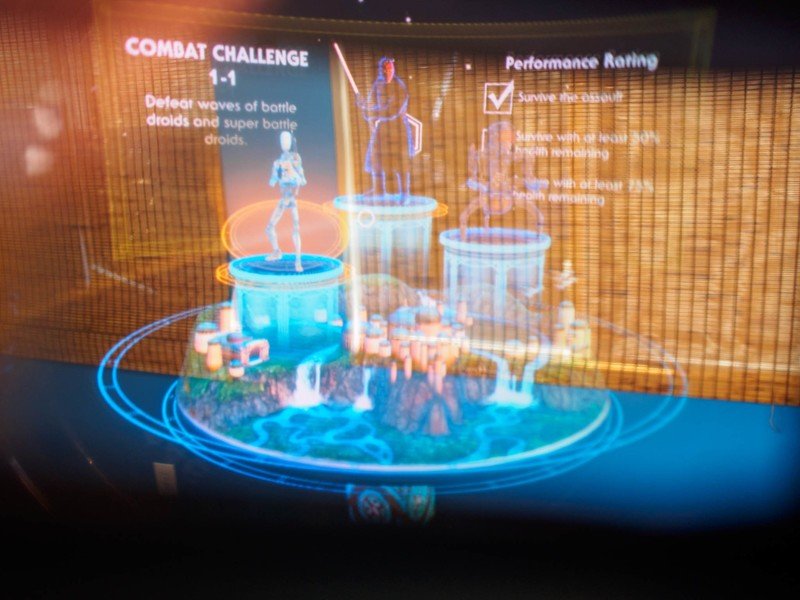
Chess is still awesome when you're playing it with a lightsaber in augmented reality.
While the lightsaber battles are clearly the main event here, the other two aspects of your Jedi training are a ton of fun. Strategic Combat missions put you in control of the Rebel forces across an entire map. The map looks like it has been projected all around you, so you can walk around the map to see the best angle. Your lightsaber becomes a sort of stylus in this situation, allowing you to place troops and declare combat targets. The difficulty level in these matches, even in the early stages, is refreshing. You really have to think about every aspect of the battle, which surprised me in a lot of the fights I encountered.
HoloChess is, well, HoloChess. The round board from the back corner of the Millennium Falcon appears in front of you, and you play rounds of crazy monster chess against the AI. You can unlock up to eight monsters, and can choose which ones you want to place and where. Once you learn the strengths and weaknesses of each monster, the game quickly becomes a race to see if you're able to either outsmart or overpower the AI player. Each difficulty level increases the advantage against you, but for fans of the movies it can be deeply relaxing to sit back in a chair and play a few rounds of HoloChess.
Search your feelings
Should you buy it? Absolutely
The first and last thing this product aims to be is a fun game for Star Wars fans, and in that Lenovo and Disney have been ridiculously successful. This is without a doubt the coolest Star Wars thing I've played with this year, and this year included laser drones and absurdly cute droids that will watch the movies with me. The only interactive Star Wars experience that tops this in my eyes is the Pod Racer arcade game, which I'm never going to be able to fit in my house so it mostly doesn't count.
Jedi Challenges is something every Star Wars geek should own, and at $199 it's something they can actually afford. When you consider that's the price range for a mostly decent lightsaber that lights up and has sound effects, this price tag is perfectly reasonable. And it does a lot more. And you can actually fit this in your backpack when you go places.
Star Wars: Jedi Challenges will be available exclusively at Best Buy, with plans for availability elsewhere soon.

